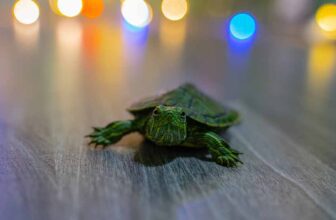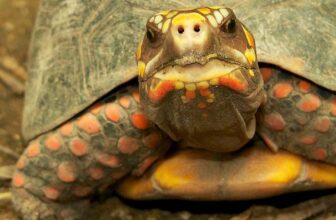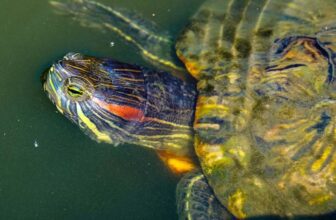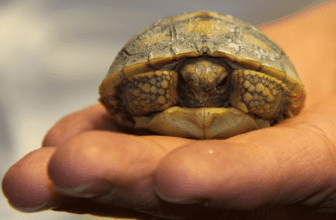The leafy-green eating, climb-loving, and dig aficionados that are the Russian Tortoises, also known as the Horsefiled’s Tortoise, can be found in many parts of Western Asia, Russia, and the Middle East. As pets, they are among some of the most popular because they are small, easy to care for, and have uniquely interesting personalities.
A fair disclaimer to all owners looking to take a Russian Tortoise into your home: These animals have impressive lifespans, generally living for over 4 decades, so if you purchase one for a pet, make sure you are aware that you are making a very long-term, perhaps a lifelong, commitment. But if you are ready, and are looking for information about how to care for this animal, read our helpful guide that will teach you how to set up the enclosure for the Russian Tortoises, what to feed them, how to identify them, and what to expect from them in terms of their behaviors.
While many other popular reptiles can be quite costly, Russian Tortoises can be purchased between $100 and $200, which makes them relatively inexpensive.
Interesting Facts About A Russian Tortoise
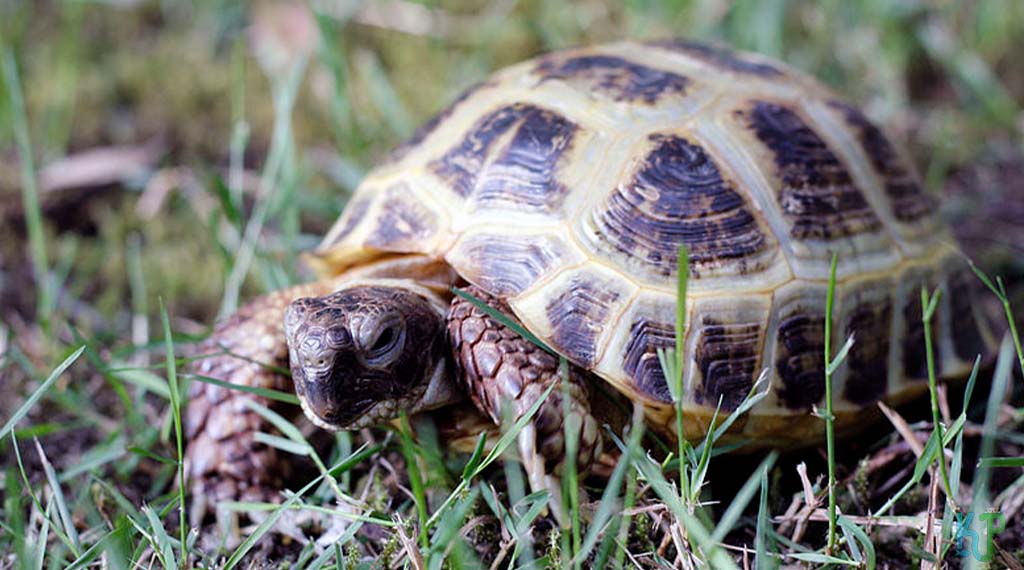
The Russian Tortoises are a species that is perhaps the most popular in the US, and while they do look like some other tortoises from the Testudo family, they have a few uniquely distinguishing characteristics, the clearest being that their front feet only have 4 toes. Another is the tan and olive-colored shell speckled with dark markings.
The shell’s underside is typically either solid black or a much darker shade of tan than the top. A variant of this species is the “Black Russian Tortoises” which is distinguished by black scute that is outlined by the olive-tannish color. In both cases, the Russian Tortoise’s skin is tannish in color.
Their natural habitat is Russian, Middle Eastern, and Asian deserts and grasslands. These places are not suited for any overly climate-sensitive creatures, so the Russian Tortoises must be hardy to survive and even thrive in some of the world’s harshest environments.
The Russian Tortoises are built heavy and round, but they are deceptively agile creatures who love to explore their surroundings and climb surfaces, the latter of which is aided by their long claws. They also assist in their avid digging activity, which they often do as a way to guard themselves against undesirable temperatures, whether they are too hot or cold.
They were only discovered in 1966 by Mlynarski and Khozatsky, so in terms of being owned as pets, they are quite new to the market. The four-toed claws on their feet make them specifically more distinguished from the other tortoises in their family (Testudo genus). These include:
- Horsefield Tortoise
- Egyptian Tortoise
- Green Tortoise
- Hermann’s Tortoise
- Marginated Tortoise
Russian Tortoise: Size
By comparison to other tortoise species, the Russian Tortoise is smaller, generally only growing between 6 and 10 inches. Interestingly, the females of the species are larger than the males (at about 8 inches of the former to 6 inches of the latter), but the males stand out for their pointed tails. 10-inch females have been known to exist, but they are exceedingly rare.
Russian Tortoise: Diet
Since Russian Tortoises hibernate in the colder seasons, they consume food voraciously in the warmer months in preparation. Wild Russian Tortoises are herbivores, consuming a diet of weeds, flowers, grass, and leafy vegetables. Therefore, owners of those in captivity should feed them:
- Mustard greens
- Dandelion greens
- Turnip greens
- Kale
- Collards (a cabbage type)
Their peculiarity is that they should have their food while it’s fresh. If the animal does not consume its food after a few hours of being provided it, it should be removed to reduce the risk of spoiling. Alongside the greens, Russian Tortoises should have their diets supplemented with corn, squash, peppers, carrots, and sweet potatoes. Additionally, they can be fed a small number of berries or apples, but only once or twice a week at most, for a treat.
While pelleted diets for Russian Tortoises are available for sale, it is recommended that these not be provided to the animal because many of them are rife with grains that are almost entirely devoid of nutrients. The same goes for iceberg lettuce which should also not be included in the Russian Tortoise’s diet.
As they are plant eaters, they should never be fed insects or any type of meat. But they do require some calcium in their diet, so at most twice a week, their food should be coated with calcium powder supplements. However, if your Russian Tortoise is housed outside, it likely does not require the calcium supplement in its diet.
The Russian Tortoise must have access to fresh, clean water in a dish large enough to permit them to soak their bodies since soaking is their method of body temperature regulations. Keep in mind that the Russian Tortoise cannot swim, so the water dish should be shallow enough for them to be able to keep their heads above the surface without any hardship.
The Lifespan Of A Russian Tortoise
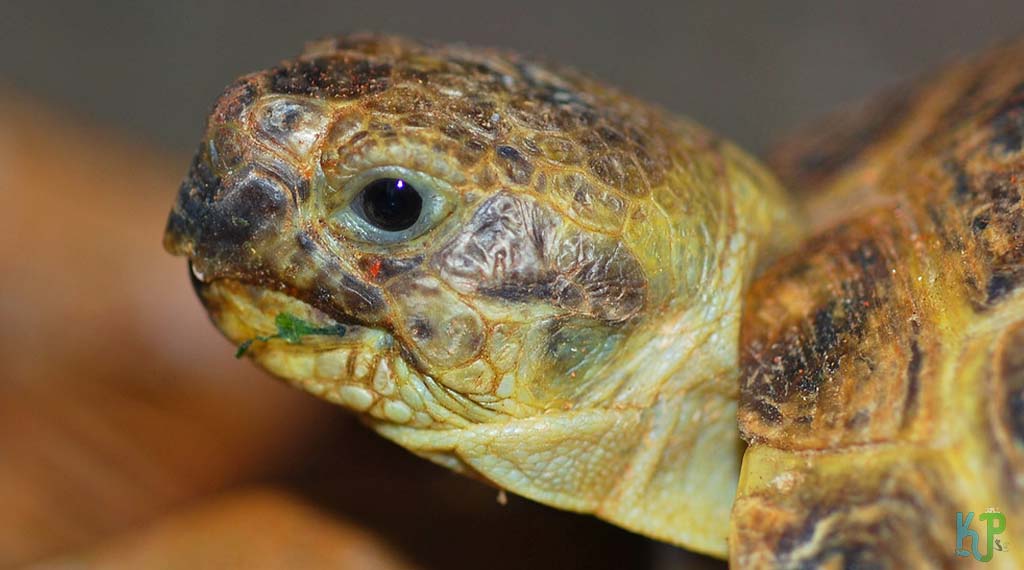
As noted earlier, the Russian Tortoise can live for over 40 years, especially when living in captivity. This is assuming a consistent and optimal husbandry routine, as long as their residence is in a well-set-up enclosure. When the enclosure is not set up correctly, Russian Tortoises are at risk of many of the same health conditions as other captive reptiles. Lack of nutrients can lead to poor health, unsanitary habitats can lead to bacterial infections, and improper housing could cause injury.
Some of the most prevalent health issues that affect a Russian Tortoise include:
- Metabolic bone disease: This can happen due to an ineffective diet and/or the lack of exposure to specific light waves. Calcium, phosphorus, and vitamin D are essential for a variety of bodily processes, but they are particularly crucial for bone and shell strength.
- Respiratory diseases are common in captive tortoises, particularly those housed in indoor enclosures with inadequate ventilation or temperatures. Bacteria, parasites, fungi, and viruses are among the microorganisms that can cause these ailments.
- Infections of the gastrointestinal tract are prevalent in Russian Tortoises. In most cases, these illnesses are caused by unclean living conditions, proximity to another sick pet, or expired food. Your veterinarian can prescribe anti-parasitic medications to treat these diseases.
If any of these health conditions are suspected, your veterinarian should be contacted. This is especially important since some of these illnesses are zoonotic and can be transferred to people.
Irregularities with the skin, the shell showing signs of blood, loss of weight, inability to walk, lethargic behavior, listlessness, wheezing or other breathing challenges, as well as notable discharge from the eyes, nose, or mouth, are all indicators of a health condition that needs to be expeditiously addressed. A healthy Russian Tortoise has a uniform, smooth upper shell with no imperfections, a consistent appetite, semi-liquid urates, and exhibits normal, expected tortoise behaviors such as basking and soaking.
Setting Up A Russian Tortoise’s Enclosure
The Russian Tortoise habitats in more places than Russia, existing across a number of Middle Easter nations including Kazakhstan, Pakistan, Iran, and Afghanistan, and have been been found in China’s western provinces. They reside in those countries’ barren, deserted regions, and are therefore adept at survival through some seriously harsh conditions.
Keeping this in mind, it is important to talk about setting up their enclosures. The first and most important aspect is deciding if your pet Russian Tortoise will live indoors or outdoors. The latter is the better option for those living in a warmer climate as it will be more closely tied to the natural environment the animal is used to. An outdoor enclosure also gives the Russian Tortoise plenty of room to roam, explore, and climb.
They should have at least a 3-foot by 3-foot pen with walls 1 foot tall and 6 inches deep for outdoor enclosures. It is essential to make certain that a section of their enclosure is shaded so that they can regulate their body temperature effectively.
Plastic tubs, glass tanks, and wooden terrariums are all suitable alternatives for indoor habitats. Indoor enclosures should be at least 5 square feet in size, although larger tanks are generally preferable.
Even more importantly, keep in mind that these avid climbers have been known to escape their enclosures, so it is pivotal that whether the enclosure is indoors or outdoors they need to be prevented from doing so as it poses a danger to their lives. Their indoor tank should be made of glass, have 12-inch walls, and afford them UVB lighting for half of a full day (12 hours) at a minimum. Soil, sand, pebbles, and hay is the best material to make up the bedding.
Indoor enclosures should have a warm and cooler side of the tank, with the former being heated. The cooler side should be at 70 to 72F (room temperature), while the latter should be over 90F. To process their calcium, their bodies require UVB light, which can be provided via a UV-based light and basking lamp, or a mercury vapor bulb. All of the heaters and lights should be turned off at night, as long as the enclosure continues to be at over 60F in warmth.
The substrate does not need to be one particular material, but rather a mix of several including sand, wood chips, hay, soil, and pebbles. It should be non-compact and dry to permit the animal to engage in its digging behaviors. Such substrates can be purchased in stores. If you acquire it from the wild, make sure that there are no parasitic traces, fertilizer, or animal fecal matter contaminations before setting it up for your animal. Additionally, they should be provided multiple rocks so they can engage in their climbing habits.
Check our pick for the best Indoor Tortoises Enclosure: Aivituvin Wooden Tortoise House
Cleaning A Russian Tortoise’s Tank
To preserve the optimal health of your pet Russian Tortoise, it is important to maintain a clean living environment in their enclosure. A few factors go into keeping a clean environment for them to thrive. Since they use the water bowl for both drinking and soaking, it should be changed twice a day, especially since the animal typically defecates while soaking. The substrate should also be changed every week.
The rocks, logs, and any other climbing peripheries in the tank should be removed and scrubbed down for cleanliness regularly. The entire tank should be emptied and washed, including a soapy scrub down monthly.
When cleaning, pay attention to the animal’s feces. It should consist of semi-liquid white urate with darker components. If you see anything else, such as overly watery consistency, firmness, or traces of blood, contact your veterinarian for advice.
Russian Tortoise’s Typical Behaviors
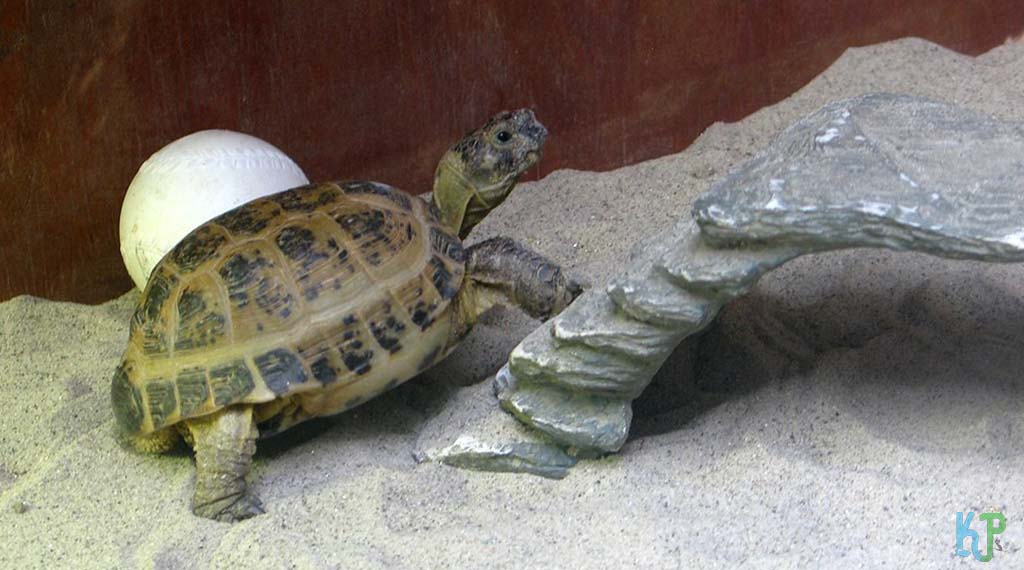
Much like a dog, the Russian Tortoise begins to recognize its keeper and will enjoy spending time with him/her. That makes them very personable, leading people to view them as terrific pets. The way Russian Tortoises interact with their humans through an array of common behaviors including panting, squeaking, head banging, and hissing.
Head banging is used by both genders (though mostly males) to assert their dominance, which is a primary mode of their mating rituals. When a female is carrying eggs, she uses head banging as an intimidation mechanism used to ward off threats to her would-be young. While squeaking is generally a noise associated with mating, some tortoises use it as a means of communication. When a Russian Tortoise is about to begin eating, it can often be heard hissing or panting.
Captive Russian Tortoises spend the majority of their time either soaking or basking, though a good part of their time is dedicated to regulating their body temperatures by soaking. They will also occasionally graze and climb on objects in their enclosure.
The important thing to remember about them, however, is that they are quite territorial. Humans may believe that since the animal is sociable with them, they would exhibit so behaviors to other tortoises, but that isn’t the case. This is especially pertinent when the two animals are males. A male and female pairing might result in the male becoming a harassing element by being overly sexual with the female.
Hibernation Routines
The hibernation behavior of Russian Tortoises in the wild is pretty straightforward. The milder months are spent mating and seeking food, and hottest months, it seeks out as much food as it can find and consumes it in preparation for winter hibernation. This is a cycle the Russian Tortoise repeats annually.
But if a tortoise in captivity begins to show signs of hibernation, it might indicate that its ambient temperatures are too cold for its needs. Therefore, the temperatures of the enclosure, as well as the lighting should be kept consistent throughout the year.
Handling Russian Tortoises
As long as it is done appropriately, captive Russian Tortoises are docile and comfortable with being handled regularly. It should be introduced slowly, of course, especially considering that you are dealing with a prey animal.
When picking up the Russian Tortoise, support it from underneath its shell, and keep it close to the grand. Try not to touch or grab the neck, tail, or legs. If the animal seems afraid or anxious while being handled, gently place it back into the enclosure and allow it to rest for a few hours before attempting it again.
While they typically do not mind it, every tortoise has an individual personality, and therefore, its own quirks. Remember to always thoroughly wash your hands before and after handling the Russian Tortoise to avoid getting them, or yourself, sick.
Birth And Mating Habits Of Russian Tortoises
A hatchling baby Russian Tortoise is very small, and measures about an inch in length. The mother will lay her eggs, and they will take between 60 and 75 days to hatch. The growth rate is very slow, so they won’t reach their full 6 to 8-inch length until they are 20 to 30 years old. However, they will reach sexual maturity when they are about 4.5 inches in length, which happens 15 to 20 months into their life.
During mating, males will circle the females and bob their heads. The two generally consummate the ritual after that, throughout a 10 to 20-minute mating process. After this, the females generally lay around 5 eggs. The gender of the hatchling depends on its incubation situation. When incubation temperatures are lower, the hatchling is likelier to be a male, whereas warmer incubation is more true for developing females.
How Much Will A Russian Tortoise Cost?
The Russian Tortoise can generally be acquired for $100 to $200 when purchased from breeders and stores. However, local rescue groups may have them available for less, as these animals are looking to be rehoused. Due to their lifespan, many outlive their owners and need to be repopulated in a new domicile.
The Black Russian Tortoise will generally cost more than the standard variety. Catching a wild Russian Tortoise and keeping it as a pet is not ideal. Captive-bred ones make far better pets because they are more personable and docile, having grown up around humans. When you purchase a Russian Tortoise from a breeder, make sure you find out how the animal was bred and raised to assure they are happy and healthy.
The Russian Tortoise should be alert, lack any discharge from its facial orifices, have no blemishes on its shell or skin, and when handled, it should show no signs of aggression.
Conclusion
The Russian Tortoise is a fantastic pet for anybody, from novice reptile keepers to expert enthusiasts. Because of its hardiness, entertaining behavior, tiny size, and minimal husbandry requirements, this species is one of the most popular breeds.
When purchasing this breed, keep in mind that they have a long lifetime and can live for more than four decades. Consider the Indian Star Tortoise if this is too long. They are comparable-sized tortoises that make an excellent pets.
If you want a life companion, the Russian Tortoise is the pet for you, or maybe you need to take a look on: A Beginner’s Guide to the Red Footed Tortoise
Frequently asked questions:
How long do Russian tortoises live?
Russian tortoises can live for 30-50 years in captivity with proper care. In the wild, their lifespan is typically shorter due to a variety of factors such as predation, disease, and harsh environmental conditions. A proper diet and regular vet check-ups are important for ensuring a long, healthy life for a Russian pet tortoise.
How big does a russian tortoise get?
Russian tortoises typically reach a length of 4-10 inches (10-25 cm) and can weigh up to 15 pounds (7 kg) when fully grown. They are considered a smaller tortoise species, making them a popular pet choice for people with limited space. Adult size is typically reached between 5-10 years of age, depending on the individual and the conditions in which it is kept.
What do Russian tortoises eat?
Russian tortoises are herbivores, and their diet should consist mainly of leafy greens, vegetables, and fruits, with occasional small amounts of flowers and weeds. They also require a source of calcium, and a balanced diet will help prevent metabolic bone disease. Feeding fresh and dried grass, hay, and commercial tortoise food is also suitable. It is important to vary the diet and avoid giving them high-protein or high-fat foods.



